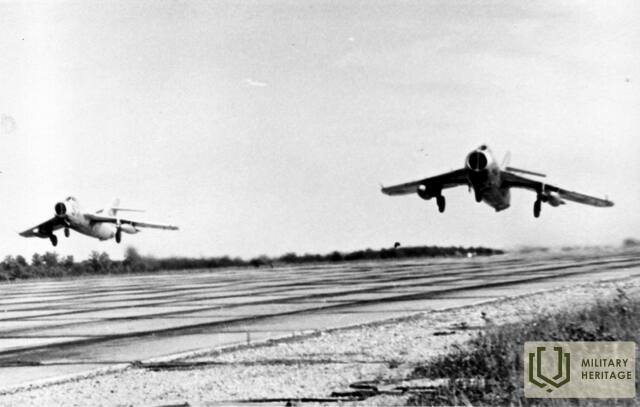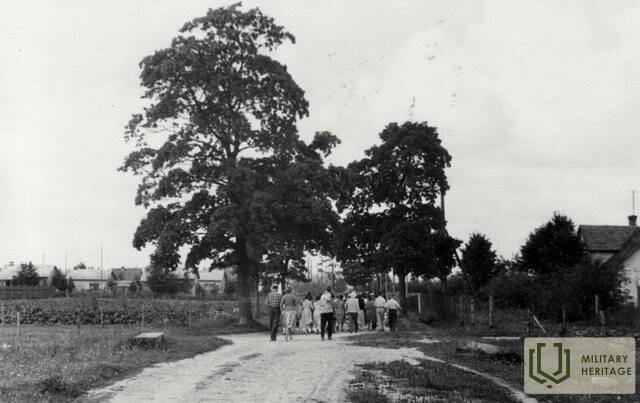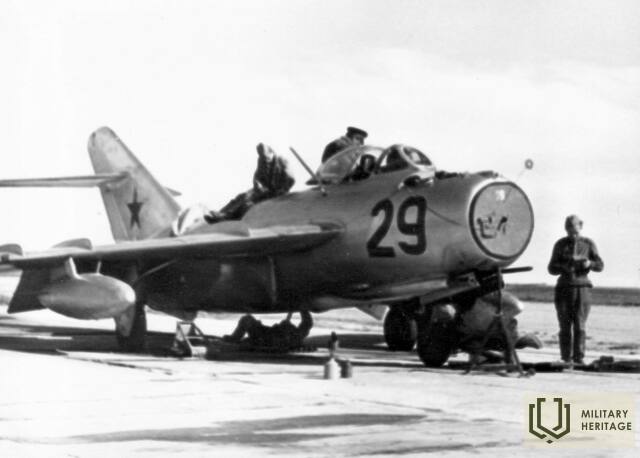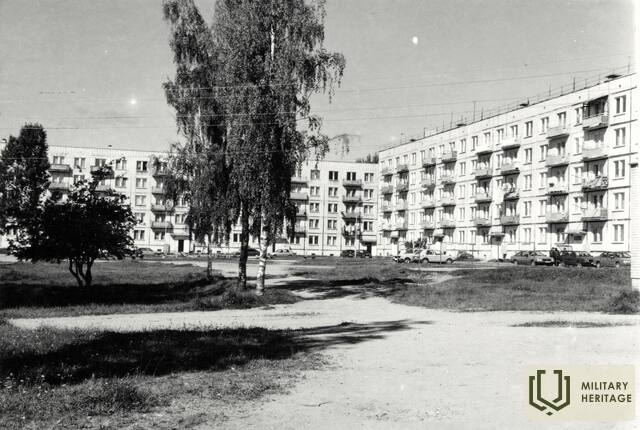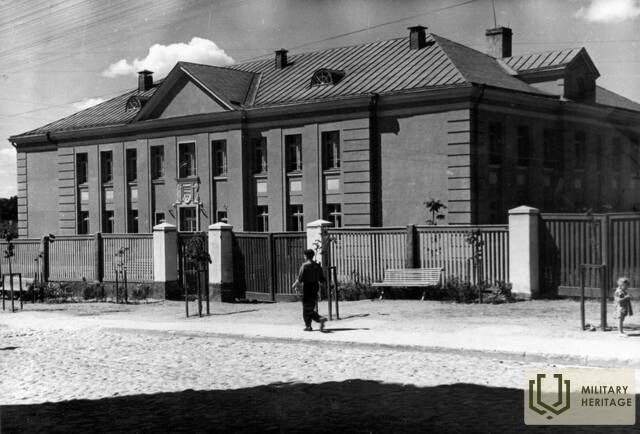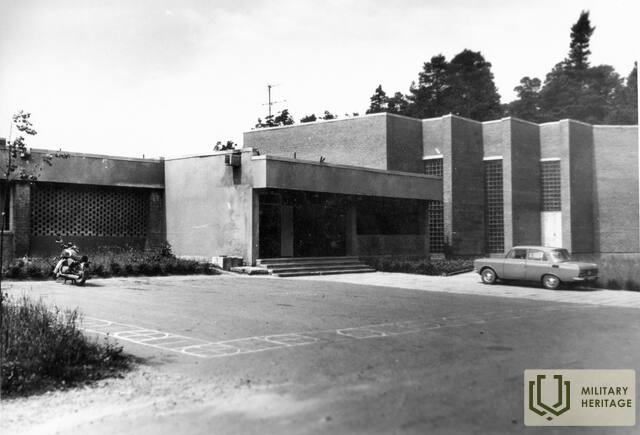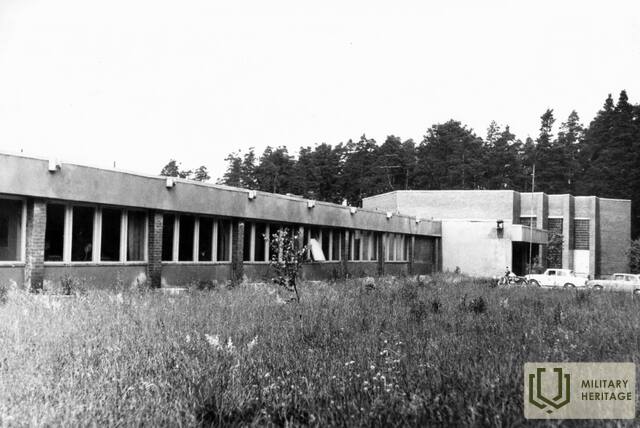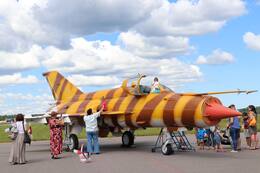Ar Tukumo aerodrome buvo palaidotos branduolinės galvutės?
Buvęs gvardijos vadas Aivaras Skurstenis atvirai pasikalbėjo su Tukumo rajono laikraščiu „Neatkarīgās Tukuma Ziņas“. Jis kadaise buvo atsargos karininkas ir lauko sargybinis, kuriam 1993 m. buvo pasiūlytas sargo darbas Laimonio Mucenieko vadovaujamoje žemės ūkio bendrovėje „Durbe“. Ten jam teko saugoti biurą – Lyvanų namą. Taip prasideda istorija.
A. Kaminas:
– Buvau išdirbęs sargyboje mažiau nei mėnesį, kai Gynybos ministerijos atstovai atėjo teirautis dėl sargybos organizavimo, nes Rusijos armija vis dar buvo aerodrome. Jie pasiūlė man sargybos būrio vado pareigas, o po mėnesio suteikė pavaduotojo karininko laipsnį ir įteikė įsakymą, kad esu patvirtintas būrio vadu. Dokumentus pasirašė Dainis Turlais. Jau 1996 metais išvykau į mokymus Danijoje, o tada įvyko Gynybos pajėgų ir Nacionalinės gvardijos sujungimas. Juris Dalbiņš buvo paskirtas Nacionalinių ginkluotųjų pajėgų vadu (tai įvyko dėl Nacionalinės gvardijos spaudimo). Tai šiek tiek istorijos.
Pirmuosius karius į aerodromą atvežėme 1993 m. spalio 12 d., nors instruktoriai dirbo jau daug anksčiau. Net ir tada Rusijos armija vis dar buvo aerodromo viduje, kontroliavo visus postus ir štabą. Žemės ūkio bendrovė „Durbė“ nedelsdama perėmė visas naftos bazes, taip pat ir aerodromo vado Turčino štabą.
Tačiau vadinamoji „kurčia ir nebylė“ dalis buvo aptverta trimis tvoromis – viena iš lentų ir dvi iš spygliuotos vielos. Ten buvo du angarai, kuriuose, kaip manoma, galėjo būti branduolinės galvutės, bet labiau tikėtina, kad juose buvo uranu praturtintos bombos (uranas pagerina galią ir skvarbą), skirtos konkretiems objektams sunaikinti (amerikiečiai tokias naudojo 1991 m. Persijos įlankos kare); nes branduolinės galvutės vis dar naudojamos vidutinio nuotolio ir panašioms raketoms, paleidžiamoms iš šachtų arba mobiliųjų paleidimo įrenginių. Aerodromo „Andalūzijos dalyje“ – netoli kareivinių – buvo vienas švinu išklotas angaras, kuriame tikriausiai buvo trumpojo arba vidutinio nuotolio raketos. Jos iš tiesų galėjo gabenti branduolines galvutes, bet ši teritorija nebuvo mūsų saugumo zonoje, o švino plokštės buvo išgrobstytos. Jei ten buvo radioaktyviosios spinduliuotės, greičiausiai dalis švino vagių jau yra po žeme...
Pulkininkas Karlas Keene'as, gerai išmanęs šiuos dalykus, tvirtino, kad ten buvo vadinamasis „50-asis kompleksas“ – mobilus raketų paleidimo įrenginys, tačiau jis buvo pašalintas aštuntojo dešimtmečio pabaigoje...
Gorbačiovo laikais, kai buvo sudaromi susitarimai dėl ginkluotės mažinimo, rusai nusprendė pergudrauti tuos Vakarų vyrus – tiesiogine prasme per porą dienų jie pakeitė bombonešių pilotus ir kitą personalą į Karinio jūrų laivyno aviacijos uniformas (patys pilotai dėl to skundėsi), bet kažkas jiems nepavyko, ir vis tiek pavyko juos sumažinti.
Žemėje palaidota chemija
– Ką galite pasakyti apie „kurčnebylio dalį“?
– Buvo du kaponierų tipo angarai su keltuvais ir įranga tam tikrai temperatūrai palaikyti. Kitaip nei kitų, įėjimas į juos buvo paslėptas už betoninių blokų sienos; ten iš tiesų galėjo būti laikomos raketų galvutės;
– Bet netoliese neva buvo autobusų stotis?...
– Ten buvo sandėlis, bet ne šaudmenims laikyti; greičiausiai – raketoms surinkti skirta vieta. Kalbant apie tai, kad kažkas buvo palikta ant žemės… Kai pradėjau vadovauti aerodromo apsaugai, taip pat studijavau Nacionalinėje gynybos akademijoje, kur, be kita ko, kapitonas Gunārs Opmanis dėstė apie masinio naikinimo ginklus. Jis buvo profesionalus chemikas ir susidomėjo aerodromu, nes pasakiau jam, kad rusai paliko ir cheminės apsaugos kostiumus, ir dideles lakmuso atsargas. Norėjau tiksliai sužinoti, kur tą dieną… Kitaip – atvyksta pulkininkas K. Keene, patikriname spinteles ir randame didelio kalibro kulkosvaidžio šovinių su kulkomis. Rado kareiviai štabe!
Kartu su kapitonu Opmanis apėjome visą aerodromą ir patikrinome – niekur (įskaitant kaponierus) radiacijos fonas nebuvo padidėjęs. Ant vienos kalvos už sandėlių galėjo kilti nedidelis pavojus – jei ten užsibūtumėte ilgiau, pradėtumėte svaigti galva. Kapitonas Opmanis paaiškino, kad tai ne nuo radiacijos, o greičiausiai šioje vietoje užkasti kažkokie chemikalai. Šią vietą specialiai saugojome, nes ten buvo visas sandėlis su vadinamaisiais – HIMDIM – naudotais cheminės apsaugos kostiumais. Atskirame baltų plytų pastate buvo metalinės statinės ir ampulės su deaktyvavimo skysčiu kostiumams skalbti. Šias ampules pavogė vietos berniukai, nes – kai mokykloje viena iš jų suplėšydavo, negalėdavai eiti į pamokas dieną – tvyrojo baisus kvapas.
Kol buvau kursuose Danijoje, mane pakeitė kapitonas Tisļonokas ir įsakė tas statines užkasti žemėje – greičiausiai jos jau buvo surūdijusios, o dirvožemis toje vietoje užterštas. Verta būtų ištirti. Kapitonas Opmanis, atlikęs šių statinių cheminę analizę, pasakė, kad tai įvairios cheminės medžiagos – amonio chloridas (naudojamas sodininkystėje), dichloraminas-T – dezinfekavimo priemonė, chloraminas (vadinamoji muilo žolė), o statinėse – etanoilaminas (pramonėje naudojamas reagentas). Kokiam tikslui jos buvo naudojamos? Nežinome. Tačiau reikėtų pridurti – vienoje vietoje buvo parodyta padidėjusi radiacija – vieno pastato „kurčnebylių dalyje“ buvo visokių orlaivių atsarginių dalių. Kapitonas Opmanis, iš smalsumo, patikrino piloto kabinos slėgio matuoklio nugarėlę ir, mūsų nuostabai, fonas gerokai viršijo normą. Įdomu tai, kad ekrane nieko nebuvo rodoma, bet, matyt, gale buvo radioaktyvių elementų...
Ir prostitutė, ir nelegalus alkoholinis gėrimas
– Ar evakuojant Rusijos kareivius, jie bandė parduoti viską – kilnojamąjį ar nekilnojamąjį?
– Taip, būtent taip ir buvo – jie pardavinėjo viską, ką galėjo pajudinti – net senus bobikus. Jie man pasiūlė 5,45 mm kulkosvaidį su 300 šiluminių šovinių komplektu už 130 latų su visais rusiškais dokumentais. Tuo metu tai buvo dideli pinigai. Jie pasiūlė visiškai naują mažos talpos generatorių su vidaus degimo varikliu – su juo galėtume aprūpinti elektra visas savo kareivines – už 70 latų... Po to tie, kurie buvo apsigyvenę Jauntukumuose, viską sunešė į garažus ir, kai dalis jų išsikraustė, pradėjo mažinti kainą.
Tuo metu prasidėjo karas Čečėnijoje, ir šio karo sąskaita Rusija „nurašė“ daug ginklų. Iš neoficialių šaltinių žinau, kad Čečėnijoje taip pat buvo rasta žemė-oras raketų. Kuo kovojo čečėnai? Su Rusijoje pagamintais ginklais, o atsargos buvo nuolat papildomos...
Tačiau daugelis mūsų vyrų iš Gynybos ministerijos turėjo grynai ekonominių interesų – geras pavyzdys buvo prie ministerijos įkurta bendrovė „Rabarberi“, kuri neva užsiėmė mineralinio vandens gamyba aerodrome (Tuo metu viename iš angarų aptikome medinių kubilų ir kelis tūkstančius stiklinių butelių, kurie naudojami degtinei, o ne mineraliniam vandeniui pilstyti. – Red.). Mano berniukai sėdėjo ant kaponieriaus ir viską fiksavo žiūronais – įskaitant ir tai, kad vieną naktį žemėje buvo užkastas visas traukinio cisternos tankas. Todėl ir tapome nepageidaujami – pernelyg uoliai saugojome...
Jokia armija neatskleidžia savo paslapčių.
– Ar rusų karininkai mums pasakė, kas buvo laikoma aerodrome?
– Taip, buvo pokalbių. Buvo vienas senukas, vardu Michaličius – jis dirbo virėju; jis buvo protingas žmogus. Jis pasakojo, kad septintajame dešimtmetyje buvo mintis čia laikyti branduolinius ginklus – netgi buvo pastatytas angaras, bet planas liko neįgyvendintas. Apie „kurčius ir nebylius“ informacijos nėra, nes jie buvo tarsi dalies dalis arba šalis šalyje. Į juos buvo galima patekti tik su specialiais leidimais. Yra žinoma, kad buvo speciali saugykla „žemė-oras“ raketoms surinkti, nes prieš paleidžiant ar išbandant jas poligone, jas vis tiek reikia surinkti.
– Nustebau, kad aplink „kurčiųjų ir nebylių“ skyrių buvo specialūs betoniniai stebėjimo bokšteliai su kilpomis.
– Tokie bokšteliai yra ne tik aerodrome ir aplink jį, bet vienas, skirtas šaudymui, netgi Ventspilio plento pakraštyje. Tokių bokštelių yra daug.
– Kas žinoma apie požemines perėjas ar bunkerius – ar tiek daug istorijų girdėjote?
– Pats nemačiau, bet girdėjau, kad per požeminę perėją buvo nešama amunicija. Iš principo, rusams pasitraukus, Turchino štabą perėmė L. Mucenieksas, o jei ir buvo bunkeris, jis buvo užmūrytas ir užbetonuotas. Tokio aerodromo vadas niekada nesėdėtų „nuogame“ štabe – anot tuo metu pasakojamų legendų, viena iš požeminių perėjų vedė iš Turchino štabinės į „kurčnebylių skyrių“. Ten neva yra vienas toks bunkeris, kurio perėja yra nuplėšta; girdėjau, kad viduje yra net 25 m šaudykla, ginklų saugykla ir panašiai. Taip pat gali būti – tiesiog jau tuo metu, kai įėjome, viskas buvo labai kruopščiai užbetonuota ir užmaskuota; palikta istorijai.
– Taigi, kai rusai perdavė aerodromą Latvijos pusei, ar jie nepaliko dokumentų apie visus ryšius?
– Mačiau perdavimo aktą – buvo visas sąrašas su inventorizacijos įrašais ir bendra verte, bet nebuvo jokio dokumento apie ryšius. Mano nuomone, tai buvo planas – jis turėjo parodyti, kad Rusijos armija tvirtai pasitraukia, bet jokia armija neatskleidžia savo paslapčių. Jei kas nors svarbaus ir buvo laikoma paslaptyje, tai buvo laikoma kiek įmanoma labiau paslaptyje.
Kengūros sunaikino aerodromą
– Tačiau Sovietų Sąjungos žlugimas įvyko staiga, karinius objektus Baltijos šalyse teko apleisti per gana trumpą laiką. Ir – kas nutiko strategiškai svarbiems Latvijos aerodromams? Vos tik armija ruošėsi išvykti, pažiūrėkite – viduje jau buvo privati bendrovė, susijusi su Rusijos puse... Tas pats Vasilijus Melnikas, vienas iš Latvijos milijonierių ir Godmanio patarėjas (!), – kadaise baigė Alkšnio skraidymo mokyklą, bet Atgimimo metais tapo įtakingu asmeniu uostų ir laivų statybos versle. „Mano nuomone, toks ir buvo Rusijos planas – sustumti savo žmones į strategiškai svarbius objektus ir juos sustabdyti; nebuvo įmanoma leisti, kad rusų paliktas karinis paveldas taptų tramplinu užsienio armijai.“
Ryškus pavyzdys – transporto aviacijos aerodromas Jekabpilyje. Jei Tukumo aerodromo danga galėjo atlaikyti 1600 t vienai ašiai (tai labai didelė keliamoji galia), tai Jekabpilio aerodromo – 1900 t! Bet kas nutiko? Jekabpilio aerodromui taip pat buvo suteiktas rezervinio aerodromo statusas, o jį perėmė Vokietijos bendrovė, kuri galiausiai pasirodė esanti susijusi su Rusija. Ką mes šiandien žinome apie Jekabpilio aerodromą? Nieko, nes tokio nebėra.
Kadaise kiekvienas profesionalas suprato, kad Tukumo aerodromas yra daug geresnės būklės nei Lielvārdės aerodromas, nors oficialiai buvo teigiama priešingai. Lielvārdės aerodromas buvo pastatytas pelkėje su pažeistu drenažu, jis apaugęs ir grimzta. Lielvārdėje taip pat buvo pavogtos kai kurios plokštės, pastatų beveik nebuvo, tačiau jis buvo pripažintas vertingesniu už Tukumo aerodromą, nors net remonto angarai čia buvo puikios būklės – su visais gaisriniais siurbliais (mano laikais vienas kareivis netyčia juos įjungė, ir pradėjo kristi putos); tik kareivinės ir klubas buvo apgailėtinos būklės. Bet tai jau nereikšminga; bet viskas, kas susiję su aerodromu, buvo puikios būklės (šiuo metu NATO skyrė 31,5 mln. latų ir dar 5,5 mln. Lielvārdės aerodromo kilimo ir tūpimo tako bei infrastruktūros atnaujinimui – Gynybos ministerija. – Red.).
Mūsų sargybos būrys buvo lyg dantų skausmas aukštesnei vadovybei. Mes – sargybos būrio kariai – manėme, kad aerodromas reikalingas Latvijai – turėsime darbo, todėl stengėmės viską apsaugoti. Surinkome visus dar pusiau naudingus baldus į vieną angarą, bet mane išsiuntė į Daniją, į mano vietą paskyrė kitą vadą, o angaras buvo apiplėštas... „Suskaičiavome visas aerodromui išardytas tako plokštes, sugavome vagis (daugiausia L. Mucenieko žmones), užsirašėme automobilių numerius ir pranešėme vadovybei, bet paaiškėjo, kad viskas buvo suderinta...“
– Taigi išeina, kad Gynybos ministerijos vadovybė taip pat buvo korumpuota ir priėmė Latvijai nenaudingus sprendimus?
– Nesakiau ir negaliu įrodyti, bet visi gynybos ministrai yra buvę, regis, nereikšmingame Tukumo aerodrome – T. Jundzis, JA Trapāns, V. V. Pavlovskis ir valstybės sekretorius J. Davidovičius, jau nekalbant apie gynybos pajėgų vadą Dainį Turlo ir Nacionalinių ginkluotųjų pajėgų vadą Jurį Dalbinį. Matome, kokias jėgas šiandien remia D. Turlais (jis kandidatavo savivaldos rinkimuose Šlesero partijoje, prieš tai buvo dviejų kairiųjų partijų deputatas; kartą žurnalistų pasmerktas už Vidaus reikalų ministerijos sporto žaidynių organizavimą Kandavoje nacionalinio gedulo dieną – birželio 14 d. – Red.) ir – ar žinome, kas buvo ir ką jis veikia šiandien, bankrutavusios žemės ūkio bendrovės „Durbe“ direktorius Laimonis Mucenieksas? Kaip paprastas tolimųjų reisų sunkvežimio vairuotojas iš Jelgavos galėjo gauti aerodromo valdymo teises? Kodėl L. Mucenieksas apsistojo Jūrmaloje, Rusijos išlaikomame viešbutyje?...
Interviu iš laikraščio „Neatkarīgās Tukuma Ziņas“
Susijusios vietos
Aviacijos muziejus „SKY ZOO“
Aviacijos muziejus „Sky Zoo“ yra Smārdės valsčiuje, Tukumo savivaldybėje, Jūrmalos oro uosto teritorijoje, kuri anksčiau buvo Tukumo karinis aerodromas. Ekspozicijoje eksponuojami lėktuvai YAK-40, AN-2, SU22M4, PZL TS-11 Iskra ir sraigtasparnis MI-24. Ekskursijos po aerodromą metu apžiūrimi angarai, kaponieriai ir inžinerinė įranga. Aerodromą naudojo tiek Vokietijos, tiek Sovietų Sąjungos armijos. Sovietų okupacijos metu tai buvo vienas svarbiausių karinių aerodromų Latvijos teritorijoje. Jame dislokuoti naikintuvai buvo skirti atakuoti priešo laivus ir bombarduoti pakrantės įtvirtinimus. 1975 m. lapkričio 9 d. naktį Tukumo aerodrome buvo gautas kovos signalas – Sovietų Sąjungos teritoriniuose vandenyse (Rygos įlankoje) buvo priešo karo laivas, kurį reikėjo sunaikinti. Iš Tukumo pakilo keli lėktuvai. Tačiau paaiškėjo, kad ginkluotas maištas prieš esamą sovietų režimą įvyko sovietų karinio jūrų laivyno karo laive „Storoževoi“ („Globėjas“). Lėktuvams pasiekus karo laivą, mūšis dar tęsėsi. Vėliau sukilėlių vadas Valerijus Sablinas, sovietų karinio jūrų laivyno karininkas, buvo sužeistas, o maištas baigėsi. Jam buvo skirta mirties bausmė už išdavystę. Tai buvo vienas dramatiškiausių įvykių, rodančių nepasitenkinimą režimu ir žyminčių artėjantį jo žlugimą.




